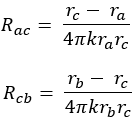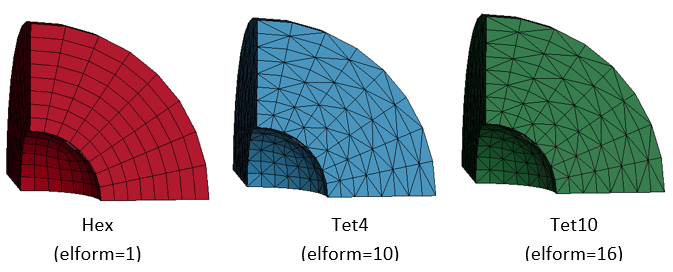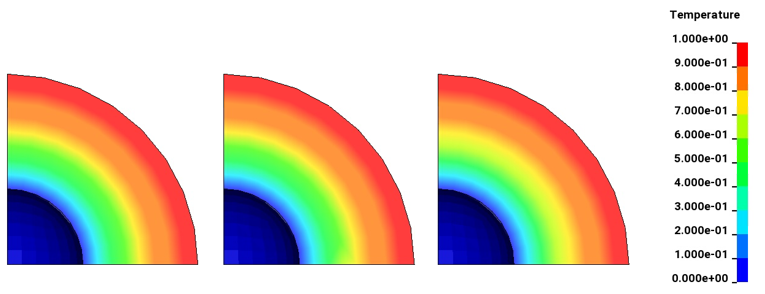VM-LSDYNA-SOLVE-004
VM-LSDYNA-SOLVE-004
Steady State Thermal Analysis of 3D Hollow Spheres with Temperature Boundary
Condition
Overview
| Reference: | Kreith, F. (1959). Principles of Heat Transfer (2nd ed.). International Textbook Co. |
| Analysis Type(s): | Steady State Thermal |
| Element Type(s): | Solid |
| Input Files: | Link to Input Files Download Page |
Test Case
A hollow sphere has an inner surface temperature Ta of 0°C at ra and an outer surface temperature of 1°C at rb. The material of the hollow sphere is isotropic. Compute the steady state temperature at rc = 3.51419 m.
| Material Properties | Geometric Properties | Loading |
|---|---|---|
| k = 1 W/(m°C) | ra = 2 m | Ta= 0°C |
| — | rb = 5.02839 m | Tb = 1°C |
Analysis Assumptions and Modeling Notes
LS-DYNA Thermal Solver 11 is used. Three hollow spheres in this example are modeled using ELFORM = 1, 4, and 16. The temperature boundary conditions are applied using the keywords *BOUNDARY_TEMPERATURE.
The modeling of the sphere is accomplished using one eighth symmetry. The heat flow is limited to be only in the radial direction.

At steady state, the rate of heat dissipation Q:

Where the thermal resistances Rac and Rbc can be expressed as below:

From the above equations, the analytical solution of Tc is obtained as 0.715438°C.





